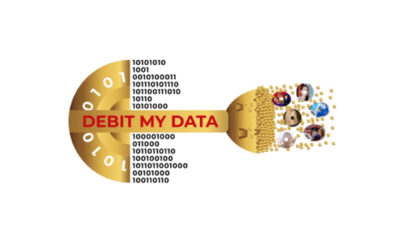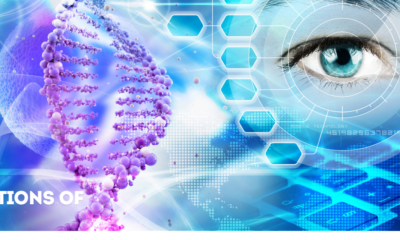Mental Health
Autism Spectrum Disorders: Navigating Early Diagnosis and Intervention

Autism Spectrum Disorders (ASD) represent a broad range of neurodevelopmental conditions characterized by challenges in social interaction, communication, and repetitive behaviors. ASD is a complex and diverse condition, affecting each individual differently, from highly functional to severely impaired. The spectrum nature of autism implies a continuum that includes various combinations of characteristics, making each case unique. Early diagnosis and intervention have emerged as crucial strategies to mitigate the effects of ASD and improve the quality of life for those affected. This documentary-style article delves deep into the significance of early diagnosis, the current methods employed, the barriers faced, and the interventions that can positively impact the lives of individuals with autism and their families.
Understanding Autism Spectrum Disorders: A Brief Overview
Autism Spectrum Disorders encompass a range of conditions previously diagnosed separately as autism, Asperger’s syndrome, and pervasive developmental disorder not otherwise specified (PDD-NOS). The American Psychiatric Association’s DSM-5 (Diagnostic and Statistical Manual of Mental Disorders, Fifth Edition) combined these disorders under the ASD umbrella to reflect the understanding that autism manifests on a continuum. ASD affects approximately 1 in 54 children in the United States, with similar prevalence rates globally, and is more common in boys than girls.
The core characteristics of ASD generally manifest in three primary areas:
1) Social Communication Challenges: Individuals with ASD often struggle with interpreting social cues, such as facial expressions, tone of voice, and body language. They may find it challenging to establish and maintain friendships and engage in reciprocal conversations. Some may not speak at all, while others might have a vast vocabulary but struggle with the pragmatics of language understanding what is appropriate to say in a given context.
2) Repetitive Behaviors and Restricted Interests: ASD is also marked by repetitive behaviors (such as rocking, hand-flapping, or repeating phrases) and intense, focused interests in specific topics. These behaviors can range from simple motor movements to more complex rituals or routines that provide comfort or help cope with anxiety.
3) Sensory Sensitivities: Many individuals with ASD experience sensory processing differences, where they may be overly sensitive or under-responsive to sensory stimuli. This can include hypersensitivity to lights, sounds, textures, or tastes, leading to discomfort or distress in specific environments.
The Importance of Early Diagnosis in ASD
Early diagnosis of ASD is critical as it opens the door to early intervention, which can significantly improve developmental outcomes. Research indicates that the brain has heightened plasticity during the early years of life, making it more amenable to interventions that can positively alter developmental trajectories. For children with ASD, this means that early therapeutic input can substantially enhance their social, communicative, and cognitive abilities, enabling them to achieve better outcomes in school and life.
Early diagnosis also empowers parents and caregivers by providing a clearer understanding of their child’s behaviors and needs. It allows for better planning, resource allocation, and access to support services that can help families navigate the challenges of raising a child with ASD.
Current Diagnostic Practices for ASD
Diagnosing ASD involves a combination of developmental screenings, comprehensive evaluations, and the use of standardized diagnostic tools.
- Developmental Screening: Developmental screening is the first step in the diagnostic process and usually occurs during well-child visits with a pediatrician. Screening tools such as the Modified Checklist for Autism in Toddlers, Revised with Follow-Up (M-CHAT-R/F) are commonly used for children between 16 and 30 months old. These tools are designed to identify potential developmental delays or atypical behaviors that may warrant further assessment.
- Comprehensive Diagnostic Evaluation: If a child is flagged during developmental screening, a comprehensive diagnostic evaluation is conducted by a team of specialists, including developmental pediatricians, child neurologists, psychologists, and speech-language pathologists. This evaluation involves direct observation of the child, detailed developmental history, parent interviews, and the use of structured tools like the Autism Diagnostic Observation Schedule (ADOS) and the Autism Diagnostic Interview-Revised (ADI-R).
- Genetic and Neurological Testing: While there is no specific medical test for diagnosing ASD, genetic testing may be conducted to rule out conditions such as Fragile X syndrome, Rett syndrome, or other genetic disorders that present with autistic-like symptoms. Advanced neuroimaging techniques, such as magnetic resonance imaging (MRI) and functional MRI (fMRI), are also being explored to better understand the neural mechanisms underlying ASD.
Challenges in Early Diagnosis
Despite the availability of screening tools and increased awareness of ASD, several challenges impede early diagnosis:
1) Variability in Presentation: The diverse manifestations of ASD make it challenging to identify in its early stages. Some children may exhibit subtle signs that are easily overlooked, particularly in cases where speech and language are not significantly delayed.
2) Gender Differences: ASD is often underdiagnosed in girls due to differences in how symptoms present. Girls with ASD may exhibit less stereotypical behaviors and are more likely to mask their difficulties through compensatory strategies, leading to later or missed diagnoses.
3) Socioeconomic and Cultural Barriers: Access to diagnostic services and early intervention programs can be limited by socioeconomic status, geographic location, and cultural beliefs. In many low- and middle-income countries, there is a lack of awareness, trained professionals, and resources dedicated to ASD, contributing to delayed diagnosis.
4) Stigma and Misconceptions: In some communities, stigma around developmental disorders may prevent parents from seeking an early diagnosis. Misconceptions about ASD, such as beliefs that a child will “grow out of it,” can also delay the process.
Interventions for ASD: A Multidisciplinary Approach
Intervention strategies for ASD are most effective when they are personalized and multidisciplinary, taking into account the unique strengths and needs of the individual. Early intervention programs can include a combination of behavioral, educational, speech, occupational, and medical therapies.
1) Behavioral Interventions: Applied Behavior Analysis (ABA) is one of the most widely used and evidence-based behavioral interventions for ASD. ABA focuses on reinforcing desired behaviors and reducing undesired ones through structured teaching sessions and naturalistic approaches. Other behavioral approaches, like the Early Start Denver Model (ESDM) and Pivotal Response Treatment (PRT), emphasize naturalistic and play-based learning, respectively.
2) Educational Interventions: Special education programs tailored to the needs of children with ASD are crucial for academic and social development. These programs may include individualized education plans (IEPs), sensory-friendly classrooms, and social skills training to help children navigate social interactions and build meaningful relationships.
3) Speech and Language Therapy: Speech and language therapy is essential for children with ASD who have difficulty with verbal and nonverbal communication. Therapists work on developing functional communication skills, such as using words, gestures, or alternative augmentative communication (AAC) devices to express needs and emotions.
4) Occupational Therapy: Occupational therapy helps individuals with ASD develop daily living skills, fine motor skills, and sensory integration. Therapists may use activities like swinging, brushing, or weighted vests to help children regulate their sensory experiences.
5) Medical and Pharmacological Interventions: While there is no cure for ASD, certain medications can help manage co-occurring conditions such as anxiety, ADHD, or epilepsy. The use of medications should always be part of a comprehensive, individualized treatment plan, considering the potential benefits and side effects.
6) Parent-Mediated Interventions: Empowering parents through training and support is crucial, as they play a vital role in their child’s development. Parent-mediated interventions, such as the Parent-Child Interaction Therapy (PCIT) and Joint Attention Symbolic Play Engagement and Regulation (JASPER), focus on improving social communication and building relationships within the family.
The Role of Technology in Diagnosis and Intervention
Technology is rapidly transforming the landscape of ASD diagnosis and intervention. With advancements in artificial intelligence, machine learning, and digital health, new tools are emerging that promise to revolutionize how autism is understood and managed.
1) Digital Diagnostic Tools: Machine learning algorithms can analyze vast datasets, including video recordings, to detect subtle signs of ASD that may be missed by traditional assessments. Apps and digital platforms, like Cognoa and Autism Navigator, provide accessible screening tools for parents and caregivers, facilitating early detection and intervention.
2) Virtual Reality (VR) and Augmented Reality (AR) for Social Skills Training: VR and AR are being leveraged to create immersive environments where individuals with ASD can safely practice social interactions and develop coping strategies for real-world scenarios. These technologies provide engaging and customizable experiences that can adapt to the individual’s needs and learning pace.
3) Teletherapy and Remote Support: The COVID-19 pandemic has accelerated the adoption of teletherapy, making it possible for children with ASD to receive behavioral, speech, and occupational therapies from the comfort of their homes. Teletherapy reduces geographical barriers and increases access to specialized care, particularly in underserved areas.
Future Directions and Research in ASD
The field of autism research is continually evolving, with new discoveries and approaches emerging regularly. Future directions in ASD research include:
1) Genetics and Biomarkers: Understanding the genetic underpinnings of ASD is a priority area of research. Identifying specific biomarkers could lead to more precise diagnostic tools and targeted therapies. Gene-editing technologies like CRISPR-Cas9 may also hold potential for addressing genetic variations associated with ASD.
2) Brain Imaging and Connectivity Studies: Advanced neuroimaging techniques are being used to study brain connectivity in individuals with ASD. Research has shown that individuals with ASD often exhibit differences in brain connectivity, particularly in regions involved in social communication and sensory processing. Understanding these differences may provide insights into developing more targeted interventions.
3) The Role of the Microbiome: Emerging research suggests a link between gut health and ASD, with some studies indicating that gut microbiota could influence brain function and behavior. The “gut-brain axis” is an area of growing interest, and future interventions may involve dietary modifications or probiotics to help manage ASD symptoms.
4) Personalized Medicine: The shift toward personalized medicine aims to provide tailored interventions based on an individual’s genetic, biological, and behavioral profile. This approach recognizes that ASD is a heterogeneous condition, and interventions that work for one individual may not be effective for another.
Conclusion: The Path Forward in Autism Care
Autism Spectrum Disorders present unique challenges and opportunities in the realm of neurodevelopmental disorders. Early diagnosis and intervention remain the cornerstones of effective autism management, and significant strides have been made in understanding, diagnosing, and treating ASD. However, more work is needed to address the barriers that hinder early diagnosis, particularly for underrepresented groups, and to ensure equitable access to services and support.
The future of ASD care lies in a comprehensive, multidisciplinary approach that integrates the latest scientific advancements with compassionate, individualized care. By combining early intervention, cutting-edge technology, and ongoing research, there is hope for a future where all individuals with ASD can achieve their full potential and lead fulfilling, meaningful lives.
As awareness and understanding of autism continue to grow, so does the imperative to foster inclusive communities that celebrate neurodiversity and provide opportunities for all individuals, regardless of their place on the spectrum.
-

 Press Release2 days ago
Press Release2 days agoThe Next Frontier of NFTs, Anime, and Gaming: How DebitMyData Is Making it Possible to Earn a Living From Your Data through Yourself-An Agentic Avatar that You Create and Own
-

 Press Release1 day ago
Press Release1 day agoCREcoin: The Future of Real Estate is Here—And It’s Powered by a Meme Coin Revolution!
-

 Healthcare56 minutes ago
Healthcare56 minutes agoUnderstanding Chronic Pain: New Treatments and Hope for Sufferers


































